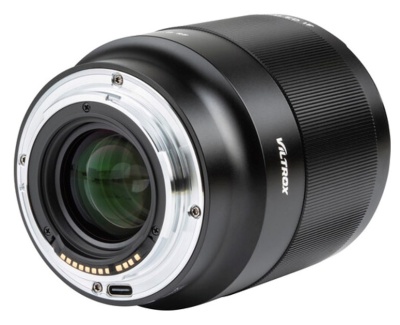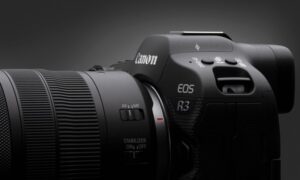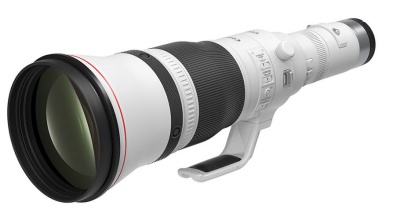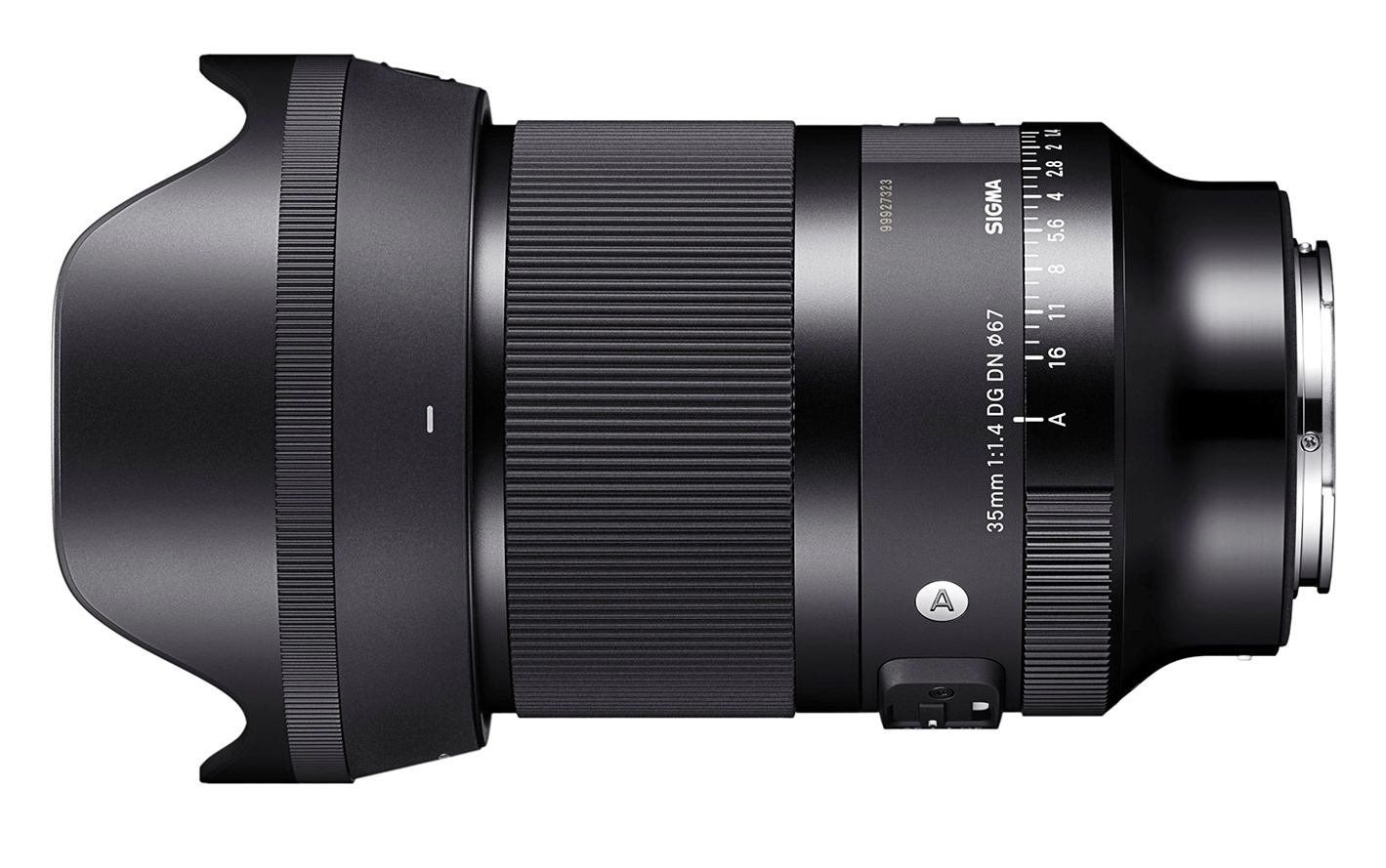The recent publicity around Canon apparently ‘banning’ a couple of low-cost third party lens-makers from making RF-mount lenses, along with what it has been saying to investors, plus its launch schedule for R-series cameras and lenses, indicates that Canon will be concentrating on the high-margin, high-end, professional sector of the photographic market in future.

While it hasn’t totally abandoned that sector of the market which bought up the Canon Rebel (EOS xxx/xxxx) range in the hundreds of thousands, and has aspirations to continue in its decade’s long position as camera industry market leader ‘even in mirrorless cameras’ this new strategy may well see that market leadership position slip. In unit terms at least. And quite profitably.
What Canon says
While there has been criticism of Canon’s strategy of making it difficult for third party lens manufacturers to offer alternatives to its RF lens range, in cold, hard business terms it is working, with lens sales pulling the imaging division into increased profitability in the second quarter of 2022. Here’s what Canon told investors and market analysts on July 26: ‘…unit sales of camera bodies, because of product shortages, remained below those of last year. However, supported by strong sales of interchangeable lenses, we posted double–digit growth in both sales and profit, and our operating profit ratio increased to 16.1 percent.’ – Let’s face it, if there were Sigma and Tamron RF-alternatives available, its unlikely this result would have been achieved.
And it’s all about making and selling more full-frame (ie, premium) models: Even under a situation of declining unit sales, we raised the ratio of full–frame mirrorless cameras for which we prioritize production and sales, and significantly increased RF lens sales to post a double–digit increase in net sales overall.
Canon sees the APS-C format models in the Canon mirrorless range are a gateway to premium: While the EOS R7 and EOS R10 models incorporate APS–C sensors, they also inherit, among others, the autofocus subject detection technology of our high–end model, the EOS R3, and offer high performance in all aspects of still image and video capture.

We expect professionals and advanced amateurs to, for example, use these as sub–cameras, and that it will also encourage people to replace their SLR cameras or step–up from entry–class cameras. With these cameras, the launch of two RF–S lenses, we will work to further increase the number of users who adopt our system.
Canon sees professionals and advanced amateurs as the future for its business – where the growth is: Going forward, we expect the professional and advanced amateur segment to expand further and that products will become more highly developed. Accordingly, we expect the overall market to grow from now on.
There’s a constant refrain from Canon that the high end is where the action is. This from the first quarter report: ‘…sales increased due to a rise in average selling prices, as we prioritized the supply of high–end models such as the EOS R5 and EOS R6, and also due to a significant increase in sales of RF lenses.’
What Canon did
While Sony shares its E-mount Basic Specification Licence ‘for lenses and/or mount adopters to mount to Sony’s E-mount Interchangeable Lens Digital Camera’ for no charge, Canon and Nikon have not cooperated with third party lens manufacturers.

Canon appears to have evolved the closed system approach for its RF range of lenses from simply not sharing engineering and design information with third party manufacturers, to actively demanding they cease selling Canon-compatible lenses.
Reports from a range of websites are reporting a customer service employee from HK lensmaker Viltrox told a customer that Canon had demanded they withdraw all RF-compatible lenses from sale.
The customer was chasing up firmware for a Canon RF-compatible Viltrox lens and the response was: ‘We have been told by Canon to stop selling all RF-compatible products so we will not release RF-related information on the official website.’
He was also told that ‘we are not the first company to be stopped’ (from selling Canon RF-compatible lenses), which is probably a reference to Samyang/Rokinon, who it is rumoured were also warned off by Canon.
While Canon simply may have had quality/compatibility issues with the junior lens-makers involved, it will be interesting to see what it does when Tamron (significant shareholder, Sony) and Sigma enter the market. It’s of note that while Tamron has recently flagged a 70-300mm zoom for Nikon, it hasn’t announced a Canon RF version.
A recent report by influential photography blogger Thom Hogan listed the number of prime lenses, both native and third party, available for full-frame mirrorless primes. Sony had an impressive 73, with an equally impressive price range – something to suit most budgets, including manual-focus lenses from Chinese manufactuerer, Younguo. Canon, on the other hand, had 17 prime lenses available for RF – including two manual Younguos. To be fair, that’s not too bad at this stage of the RF roll-out, and there are a few modestly-priced lenses in the range, but the focus is clearly on the high end.
While Canon doesn’t want to make it too easy for competitors to enter the RF market, it would be taking things to another level to attempt to legally block reputable, long-established manufacturers like Sigma and Tamron from competing.
What Canon launched
Canon’s roll-out of R-series cameras and lenses also supports the argument it is throwing its lot in with the well-heeled bit of the market.
Canon’s first R-series camera was the 30-megapixel Canon EOS R, released back in September 2018. It was a high-end model: ‘With the EOS R, you are, in essence, getting image and video quality from the 5D Mark IV at around the price point of the 6D Mark II.’ wrote DPReview.
Then came the EOS RP in February 2019. At US$1299 body only, it was the cheapest full-frame mirrorless available at the time, which contradicts the argument (dammit), but it is the exception to the rule. It was also hamstrung in those early days by a lack of affordable lenses to go with it. At around $1800 locally, it’s still close to the cheapest full-frame DSLR on the market.
Things really, um, ‘heated up’ in mid-2020 with the release of the professional level 45-megapixel R5 (US$3899, body only) and high-end enthusiast 20-megapixel R6 (US$2499 body only),
Canon only released one camera of any sort in 2021, the 24-megapixel EOS R3 ‘designed for sports, wildlife and photojournalism’, and with a hefty asking price of US$6K.
It wasn’t until this year in May that Canon released APS-C format EOS R7 (US$1500 body only) and R10 at US$1000 body only. (It’s $2300 and $1500 respectively in Australia – that darn Australia tax seems to be creeping back!)
So the Canon mirrorless range to date favours the high end (without totally ignoring the toiling punters) , and the lens range has a similar bias towards premium, but with a few lenses which would fit nicely on the affordable EOS RF.

Of the first four lenses initially launched, three were professional standard L-series models. The other was a more affordable ($800 locally) 35mm f1.8 macro prime.
Then came another 5 L-series lenses in 2019, with just one non-professional all-rounder, the Canon RF 24–240mm F4-6.3 IS USM, with a local RRP of $1500.
In 2020 Canon started populating its lens range with some more affordable models, including a 600mm and 800mm. In 2021 there were four L-series lens announced and another two non-professional models.
This year to date we have seen a couple of lenses for the APS-C model R7 and R10, along with another two L series – the RF 800mm (US$17K) and RF 1200mm (US$2oK) plus another two, the Canon RF 15-30mm F4.5-6.3 IS STM. (Here’s a question to Canon’s new marketing PR team, if you are reading this – why is this lens US$549 in the US and $1500 locally?)
So while Sony has the waterfront covered with a full range of bodies (keeping popular superceded models in the range at a lowered price point – eg, A7 II – is a winning strategy) and a plethora of affordable and professional lenses both from Sony and other manufacturers, it would appear Canon is taking a different path to business success.
An analogy might be that Sony is aspiring to be the Toyota (Kia?) of camera systems, while Canon is looking at more of a BMW positioning.
Sony’s comprehensive range of affordable lenses for Sony mirrorless cameras has become what the marketing suits call a Unique Selling Proposition when stacked up against Canon and Nikon (which has made a bigger effort than Canon to date in fleshing out its Nikkor Z range.) Sony has been at in the full-frame mirrorless game for a lot longer so it also has a more comprehensive range of Sony brand E-mount lenses. While where in marketing jargon, the other factor in the Sony Alpha system’s advantage is that the Average Selling Price for Sony E-mount compatible lenses – both Sony and other manufacturers – is considerably lower. Because of this the Sony system is, writing today, a more feasible options for a broader range of budgets.





L like Canon products, and intend to buy a mirror less camera in 2023. However, that will depend on lens availability and price. It seems that Canon is putting the company first, and we photographers last. Maybe time to look at other brands.